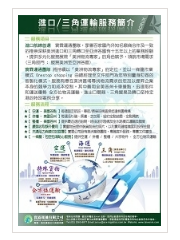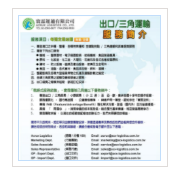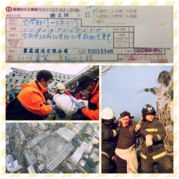罷工持續,美西進入緊急狀況
由於美國西岸現在進口貨櫃處於緊繃的狀態,托盤的數量實在是供不應求。
這會影響所有在美國西岸進口及出口的貨物流程,預估影響的時間為3~5天
另外要注意的是在NOV.1.2014,某些船公司會繼續增加GRI費用,但這次的增幅還不知道
如果有最新消息將會為各位客戶報告。
***************************************************
Long Beach enters 'crisis mode' to attack congestion
Bill Mongelluzzo, Senior Editor | Oct 07, 2014 6:30PM EDT
.png)
As congestion mounts in Southern California, the Port of Long Beach is taking immediate actions to target hot spots in the harbor area and to share information on chassis availability with all port stakeholders.
“We’re in a crisis mode right now,” Executive Director Jon Slangerup said in an interview Tuesday.
The neighboring ports of Long Beach and Los Angeles have struggled much of the year with chassis dislocations, rail service delays, unusually long truck turn times and container terminals that are pushing their storage capacities to the brink. However, rather than seeing the congestion dissipate, it continues to get worse.
The ports have applied to the Federal Maritime Commission for permission to discuss these problems and develop joint solutions, but until that permission is granted, they must operate on parallel tracks.
Like trucking and terminal operator executives, Slangerup said a convergence of factors has contributed to the port’s worst congestion problems in years, but the main culprit is the chaos that has resulted since shipping lines in Southern alifornia stopped providing chassis to their customers earlier this year. “The root cause is chassis,” he said.
The port last week established a Chassis Relief Team that held its first meeting with Direct ChassisLink, cargo interests, terminal operators and truckers. DCLI, one of the three major chassis leasing companies in the harbor, agreed to take the lead in working with the other providers to publish regular updates on chassis positioning throughout the port complex.
“Bill Shea (DCLI president and CEO) has been very visible in his attempts to bring the three parties together,” Slangerup said.
The Port of Long Beach will publish regular bulletins that deal with congestion and chassis issues, and, despite its landlord status, will do what it can to keep all of the private-sector companies working together to relieve the congestion. “The Port of Long Beach rule is we may not be an operator, but we can be a facilitator,” Slangerup said.
Each sector of the transportation industry is suffering from and contributing to the congestion problem.
“We’re three to five days behind on rail,” Slangerup said. Truck turn times of two hours or longer at marine terminals, which had been accounting for about 12 percent of all truck moves in the port complex, are now double that number. Cargo interests report waits of five to 10 days until their containers are ready for pickup.
“This is an extraordinarily bad situation,” Slangerup said.
Long Beach and the chassis leasing companies are working on short, medium and long-term action plans, he said. The short-term equipment tracking and reporting measures are designed to provide a measure of relief in the coming weeks. “The Chassis Relief Team is on this daily, throughout the day,” he said.
The mid-term solution, which DCLI, Flexi-Van and TRAC Intermodal will implement in the next 30 to 90 days, will be to develop an asset-sharing system so there is enough equipment available each day to take care of all of the needs of truckers and cargo interests in the harbor. “It looks very promising,” Slangerup said.
In the long term, the goal is to implement a neutral, or gray chassis concept in which a “pool of pools” will most likely be formed that provides inter-operability of chassis throughout the port complex. As the private sector works toward that goal, it will seek guidance from a port stakeholders’ group that Los Angeles and Long Beach formed two years ago to develop a permanent chassis solution for the harbor, he said.
As for now, Long Beach will respond day-to-day as hot spots are uncovered, Slangerup said. There is no discernible trend yet, nor is there any one terminal in the harbor that stands out as an egregious problem area. Chassis shortages and congestion issues roll through the harbor as large vessels dock, containers are discharged and trucks arrive to pick up the containers, he said.
***************************************************


.gif)


.png)





.png)







.png)



(1).gif)
(1)(1).gif)
(1).jpg)



